Situated on an eleven-acre parcel of waterfront in the shadow of the Williamsburg Bridge, the derelict Domino Sugar Refinery remains one of the most recognized monuments of Brooklyn’s rapidly disappearing industrial past. Now, after a decade of false starts, new plans for a modern, mixed use megacomplex may put an end to the decaying colossus that was once the largest refinery in the world, marking the final passage of a working-class Williamsburg.
In the late 19th century, Brooklyn was responsible for over half of the country’s sugar production, with Havemeyers & Elders Sugar Company leading the pack of over 20 major refineries that called the borough home. The factory’s signature building—a towering redbrick structure that still stands today—was constructed in 1884 to replace an older sugarhouse that had been destroyed in a catastrophic fire. Three years later, 17 of the largest sugar refiners in the U.S. merged to form the Sugar Refineries Co. Trust, later reorganized as the American Sugar Refining Co., and branded as Domino Sugar in 1902. Domino and its predecessors operated on the waterfront for a total of 148 years; at its peak, the site employed over 5,000 workers, capable of producing over three million pounds of processed sugar a day.

The American Sugar Refinery Processing House shown after its completion in the 1880s.
With the growing use of high fructose corn syrup and artificial sweeteners came a steady decline in demand for old-fashioned cane sugar. Production at the Williamsburg plant ended in the early 2000s with partial packaging operations lingering until 2004. The non-profit Community Preservation Corporation purchased the Domino site the same year for $58 million. Their plan would preserve and renovate the central refinery building, landmarked in 2007, and raise a battalion of architecturally offensive residential high-rises in the footprint of the surrounding industrial complex, razing the Raw Sugar Warehouse, constructed in 1927, and the Packaging House, a 1962 addition, in the process.

The old “New Domino” complex.
Two Trees teamed up with noted NYC firm SHoP Architects—the group is already leaving a lasting impression on the city landscape with the Barclay’s Center and the East River Esplanade. Unveiled Friday, their monumental plans seem tailor-made to appease the new population of Williamsburg, without limiting profits.
The plan is similar in scope to the vision of the CPC, with several key improvements. The buildings rise higher—up to 60 stories—to allow for more park space, including a one-acre “Domino Square,” where builders envision film screenings and outdoor concerts. Some of the structures include open spaces and sky bridges, an innovative solution sought to preserve harbor views for the inland community. The landmarked refinery building would be preserved and converted to office space, and several pieces of machinery would be salvaged for inclusion in a public “artifact walk.” In the face of such monumental changes, this may be of some consolation to New York nostalgics.
Developers are working with the YMCA to establish a community space on the site, and are also proposing a new public school. Street level retail would favor independent business over chain store tenants. Two Trees also intends to deliver on the previous developer’s promise of 660 units of “affordable” housing, though the condition was never legally binding.
With all these benefits, Two Trees is attempting to pacify a community that is weary of change, and concerned for its future. The Domino development marks a clear and dramatic manifestation of a contentious transition that’s been taking place in Williamsburg for the last decade. The area is well known today as an infamous haven for hipster youth, but 10 years ago the neighborhood was a quiet, working-class community of Jewish, eastern European, and Hispanic immigrants. Now, it won’t be long before the tattooed and the trendy are priced out, leaving room for only the wealthiest New Yorkers. Emerging across formerly affordable areas of Manhattan and Brooklyn, the familiar pattern is destined to change the face of our city. Call it progress or gentrification. Praise the plans, or lament the loss, there’s no stopping the reckless growth of New York City.
In its final moments, the Domino Sugar Refinery slips further into a speedy decay, introducing an element of the exotic to an already unfamiliar environment. Some of the alien interiors are coated with shallow puddles of tar, or dark sugar byproducts rendered the consistency of glue, or apple crisp. Others take on the appearance of an Egyptian temple in the impenetrable darkness, with row upon row of columns supporting the chasm of a vacant warehouse. Tinged aquamarine, the peeling factory floors of the packaging plant might be confused for the barnacled mechanisms of a sunken ship. The complex is unnervingly immense, presenting a seemingly endless series of floors connected by lightless, labyrinthine staircases. Alone in a factory that once employed thousands, up against its unfathomable depths, it felt like being in the belly of the whale—it didn’t take a miracle to get me out of there.
The next time you ride down the FDR or traverse the Williamsburg Bridge, take a good look at the sprawling industrial giant that was the Domino Sugar Refinery; it won’t be long before it’s preened and polished into the marketably modern new New Domino—another of the city’s rough edges, smoothed over in favor of gleaming glass.

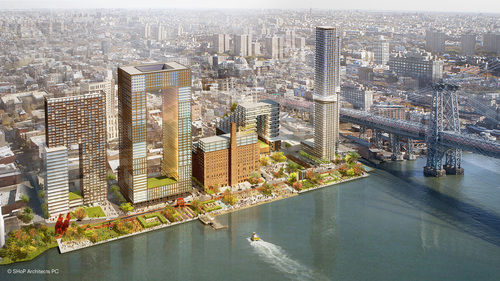
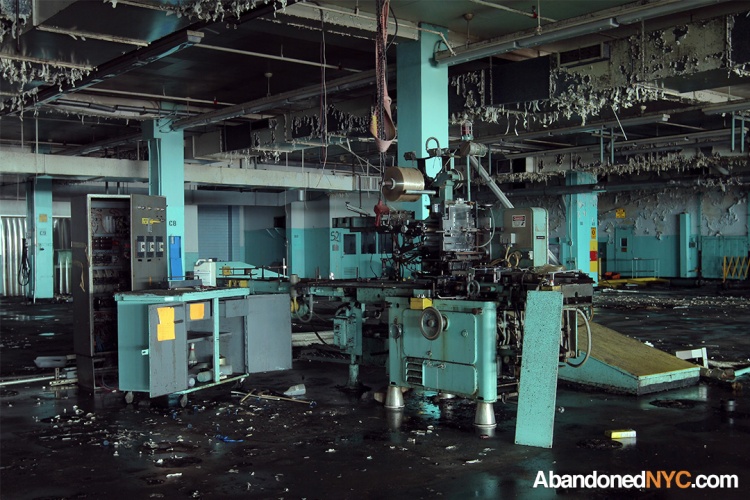
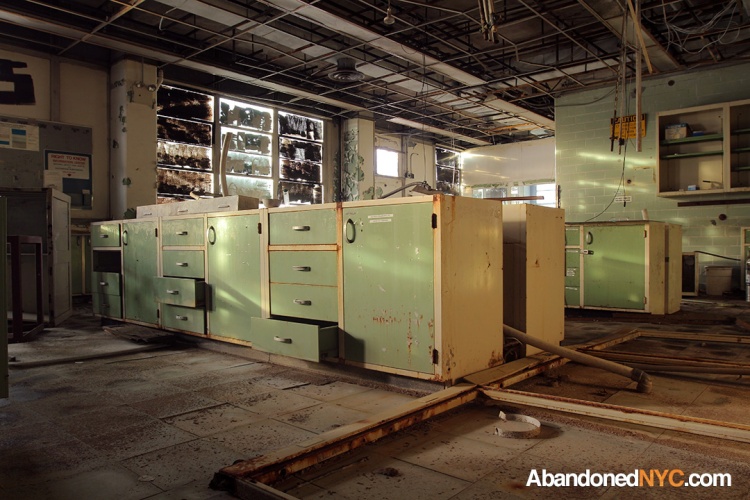

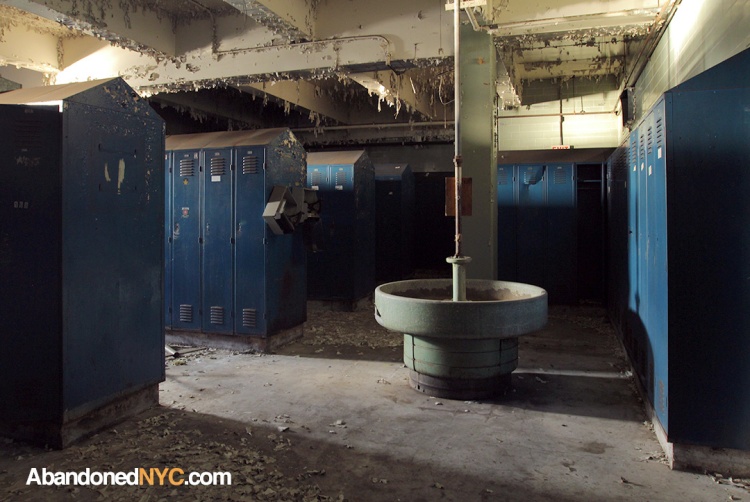
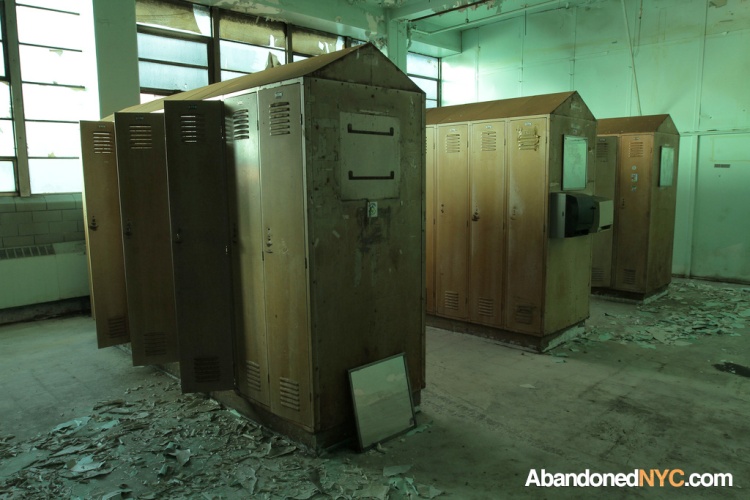
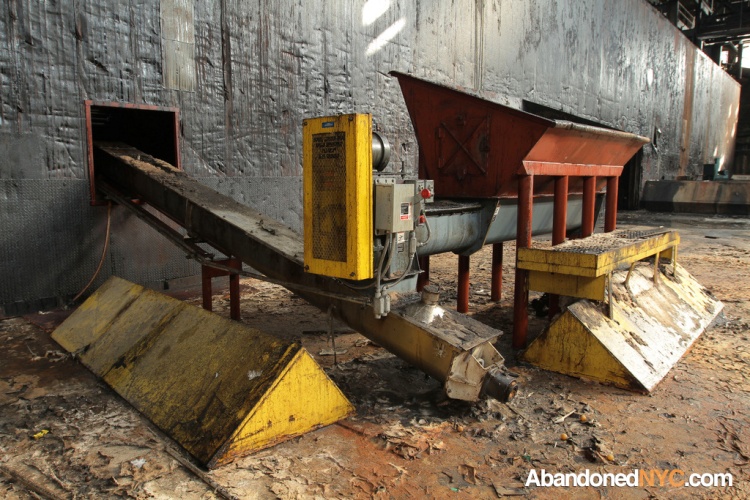


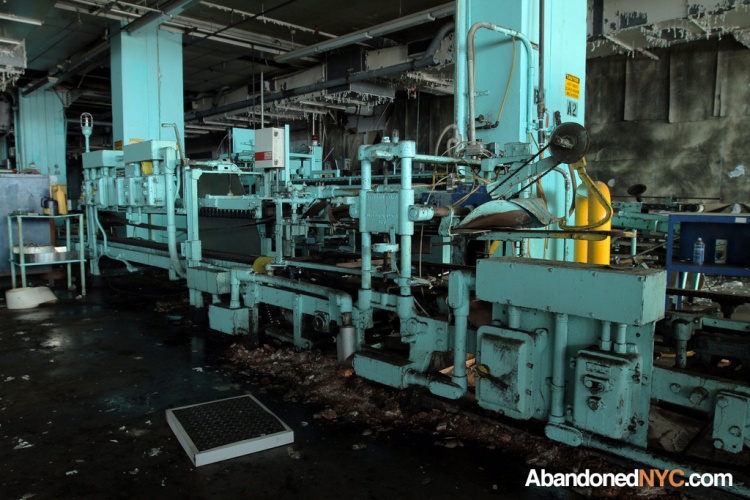
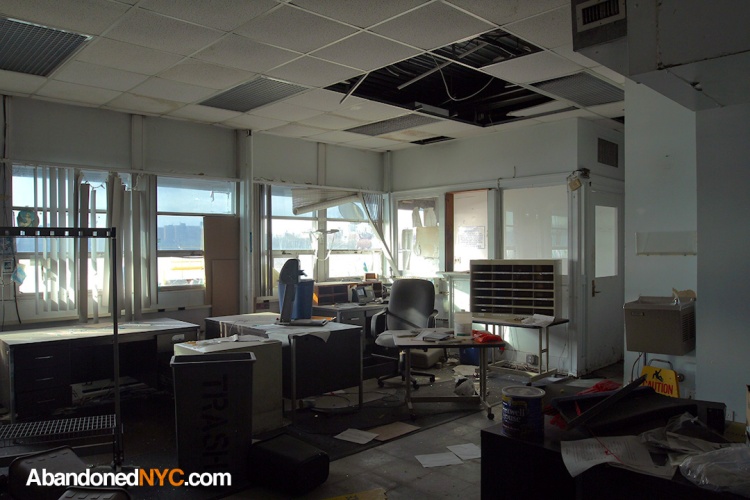
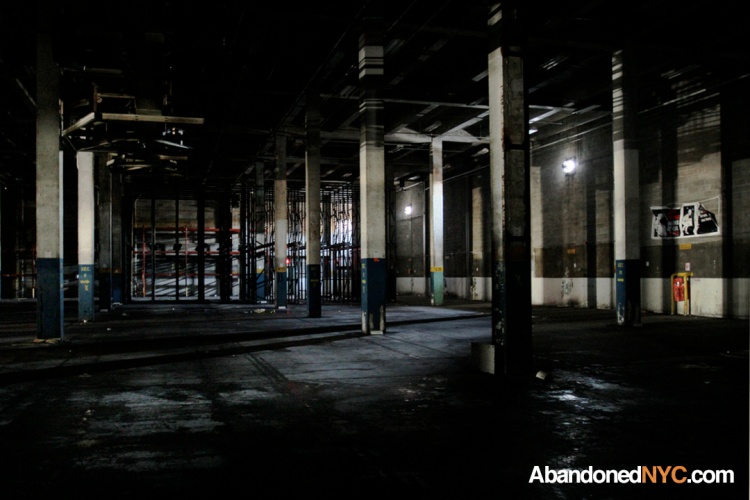

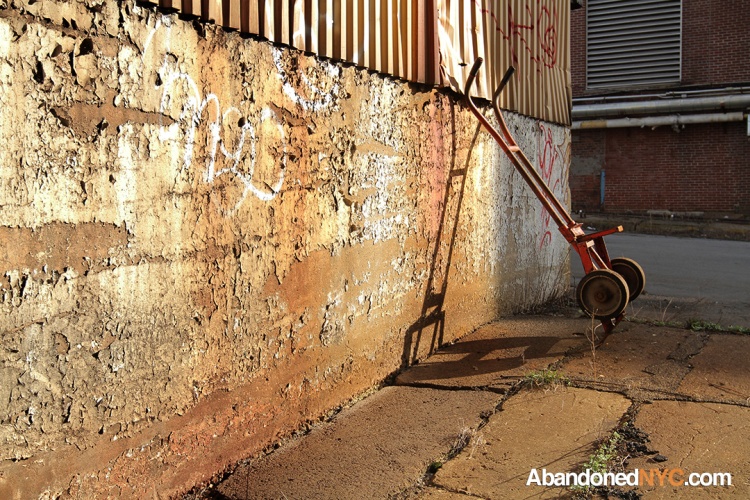
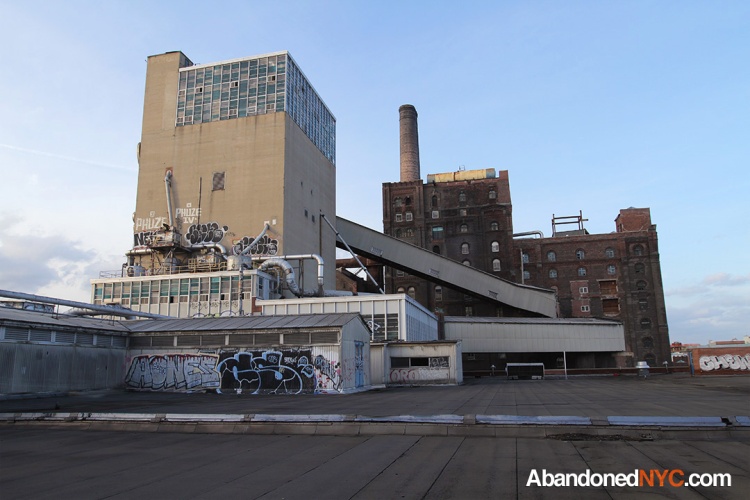
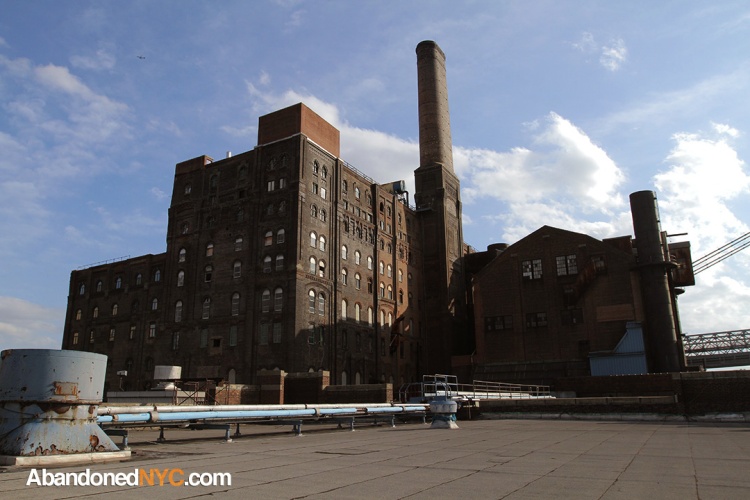
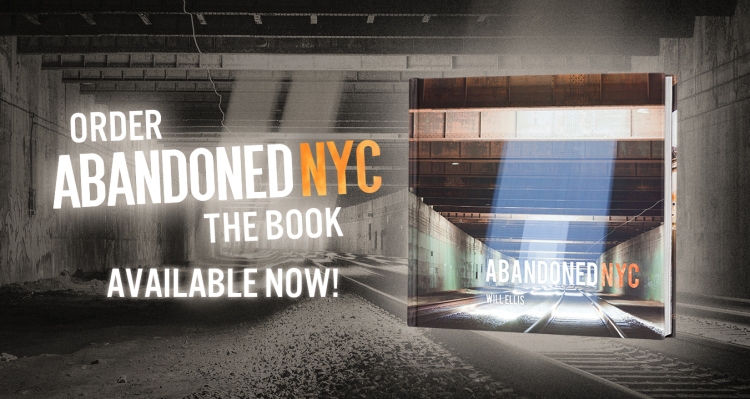

I THINK THIS BUILDING IS AMAZING.
THE NEW RENDERING IS HIDEOUS….I REALLY HOPE NO ONE ACTUALLY WANTS THIS DEVELOPMENT TO BE BUILT…
LikeLike
Posted by Brendan | 6-14-12., 5:40 amLong live mighty Domino! The pictures of the interiors are amazing! The sugar plants reconfigured my neighborhood for their laborers, including the nearby 1860 brownstone I now live in. Here we go again. When Domino goes, that will mark the end of an era more deeply than any new waterfront condo buildings ever could.
LikeLike
Posted by Alexandra Limpert | 6-14-12., 8:04 pmwhy what do you know about this place!!
LikeLike
Posted by DEBBIE | 2-13-13., 11:21 amA lot more photos here, taken in the Refinery in 2006
LikeLike
Posted by MJG | 6-14-12., 9:09 amThis is remarkable well written, I enjoyed reading about the experience as much as seeing the photographs. Ironically CPC was created by a number of large NYC National Banks such as Manufacturer Hanover, Chemical Bank, Chase and CitiBank who conspired and drew a red line around around the African American community designating the areas in which they would not loan any money.
As a result of the public outcry each of the banks invested into a mortgage pool and created The Community Preservation Corporation (CPC) to provide rehab loans to the areas that the Banks had redlined This new Corporation CPC turned out to be very profitable once it starts investing in the deteriorating African American community. What so ever its activity and pretenses are today it departed from its mission and that is why it is in big trouble today.
The “brown sugar byproducts rendered the consistency of glue—or apple crisp” is essentially the bi- product the molasses what’s left after sugarcane has been processed and refined.
LikeLike
Posted by John Goodwin | 6-16-12., 7:42 pmVery nice piece, and wonderful photos. One smallish point – most of the “compromises” you cite were proposed unilaterally by CPCR pretty much from the beginning, and not surprisingly, most of them were not really big concessions. The final deal with the city council did drop the height of the tallest towers a few stories, and the shuttle might have added along the way too.
LikeLike
Posted by FC Havemeyer | 6-19-12., 9:58 pmI really enjoyed reading this piece and hearing about your adventure getting into the building. And most of all the wonderful photos.
LikeLike
Posted by Andrew | 6-22-12., 12:48 pmI worked here as a summer job after high school in 1997/ 1998 and the photos don’t look to different from what it looked like back then haha. Brutal place (e.g. 120 temps in the Char House) but made a man out of me.
LikeLike
Posted by Tim | 7-12-12., 10:43 pmAre they serious with that rendering of new towers ? Looks like some strange form of “apartment building leprosy”.
LikeLike
Posted by M. Heinz | 7-15-12., 10:07 amSmall point. The refinery processed well over 4 million pounds per day. Photos did bring back some old memories though.
LikeLike
Posted by Stev | 10-9-12., 5:36 pmHuge complex, and nice job getting in…possibly the most sketch entry I’ve heard of. Personally, mine was stacking cement blocks to get high enough to swing a rope around the windowsill of an abandoned building and climb up via rope.
LikeLike
Posted by Dan | 1-24-13., 6:12 pmMy brother was a foreman,at Domino Sugar,up until it closed.He told me that It was a great place to work for,and that all the people that worked for him,were like a big family.He even told me a few ghost stories,that he recounted to me,about the Char House (who had workers quit on the spot,after seeing spirits there) and ‘the whistler’…..he only went over it briefly,and promised to tell me the stories in detail,at a future time.I even visited the plant twice,with him,and I can tell you that there is a real possibility,that it may be haunted.I got an eerie vibe,in certain places in the plant……As for the photos,/ story….they are FIRST RATE !!! It is a real shame,that it is being developed.It should be left alone,as a relic from the bygone days when industry was king………..!!!
LikeLike
Posted by Jeffrey Kunicki | 1-24-13., 9:03 pmThanks for your comment, Jeffrey. Would love to hear more about those ghost stories…
LikeLike
Posted by abandonednyc | 3-6-13., 1:12 pmmy brother told me he knew of 2 ghost stories, at domino….’ the whistler ‘ dates back to the turn of the century,when an accident happened,there (there wasnt any OSHA around either) so if someone was badly hurt or killed,it probably was swept under the rug…..the story he heard from other workers was that some people remember seeing a shadowy shape hiding in the dimly lit spots there,and they distinctly heard a whistling from this shape.My brother just shrugged it off…………until one night he was working the night shift……..and no one was there on the floor…..then all of a sudden the window blew open in the char house (was the howling and moaning of the wind) that gave a creepy effect…..his job as forman,was to make sure all was secure in the plant.He tried to close the window,and the latch broke (very old) so,then he had to try to find a hammer and nails to nail it shut….he was worried that the winter wind might make the pipes burst……he returned to the window,and nailed it shut,when all of a sudden he heard someone whistling to his right….he looked quickly that way,and saw a shape of a man in the low light (but the thing that was scary is that this ‘image’ was TRANSPARENT)…….as he was looking at it……it disappeared into thin air!!……he was startled, but as the building was over 125 years old,it had ‘ a history ‘ of incidents that are erased with the passage of time,and long forgotten as all the people who were there are now dead…..he told some workers what he saw the next week,and they said ‘you saw it too’ ?? ….My brother Bob,saw this ghost (at least) 4 more times,and always in the same area (this may be where the accident or death happened) all I know is that the other forman,he worked with refused to go into the char house after dark …..their explanation…..’its too dirty’ …..YEAH, RIGHT !!! ………………now onto the other ghost story………….this is the story of a man named ‘valentine’…….this story (again) is from the earliset days of Domino (which would be around the turn of the century)…….it seems that ‘valentine ‘ worked in the char house (this is a place where it is intensely HOT) between 120-130 degrees…..Very few people can stand this intense heat,non stop…..’valentine’ was from Haiti ,and so were the other guys that worked the char house…..If you know (anything) about Haiti,…..its a land that has voodoo, santaria,and people who are from there say that ‘the dead walk’…….as the story goes,’valentine’ was on his way to work at Domino,and this particular night was a severe storm,with heavy rain,lightning,high winds…..valentine passed this very old building (probably from the 1870’s) …..and the facade (roof overhang) fell completely off DECAPITATING HIM……..news traveled fast,to Domino,of his death…..thats when the guys in the Char House, were working,and they saw valentine’s spirit,at his station,just as he would be,in life…….this is (not ) the reason those guys quit,what happened was that they both saw on the metal conveyor belt (in the ovens) a spirit that was transparent,and had NO HEAD!!!!! they were very frightened,and they both quit on the spot (as they were Haitians) this to them was an evil sign…..possibly from the devil………so,now you can see that there is a very real possibility of hauntings and spirits at Domino Sugar………I would imagine,that the ghosts are still active there…….as in any ‘haunted’ locations,they retain there images of past events for ETERNITY…………..I hope that this scares you enough to sleep with your lights ON………………….
LikeLike
Posted by Jeffrey Kunicki | 3-7-13., 10:06 pmNice shot’s as usual Will. The first photo you have of the Sugar House, the entire floor which was once sticky and a mess, has been power washed and entirely cleaned.
LikeLike
Posted by Angel Figueroa (@AEBEXNY) | 3-7-13., 7:19 pmThat’s odd considering it’ll be demolished soon–I guess the developers didn’t want to get their shoes dirty. I do remember it being a total mess, would be a terrible place to trip.
LikeLike
Posted by abandonednyc | 3-7-13., 8:19 pmThat building was where the raw sugar was brought in and started its long journey to being a sugar cube. The developers said in a recent article that they are going to find an interim use for the building – it will probably be the last building to go (so it will be around for 8 to 10 years or longer).
LikeLike
Posted by FC Havemeyer | 3-7-13., 9:05 pmOh, there were many more. Try doing holiday duty alone on Christmas overnight. It makes a haunted house seem tame.
The place was a city unto itself; a warren of alleys and passages. 36 buildings on property that was 5 blocks long, 2 blocks wide and as tall as 13 stories, all stuffed with huge machinery and vessels.
Almost all the structures were connected by numerous pipe tunnels and conveyor bridges that you could walk through (if the tunnels weren’t flooded) such that you literally could get from one end to the other of the refinery unseen from outside. If you were brave enough. Did it many times.
LikeLike
Posted by I6 | 9-26-19., 4:15 pmAmazing shots! I don’t understand why they would build a building with a hole in the middle? That’s just an absurd waste of what I assume to be ridiculously expensive real estate?
LikeLike
Posted by Ashley Coventry | 3-8-13., 12:01 pmThe hole in the middle would probably be necessary to keep the building stable in high winds.
LikeLike
Posted by Chris M. | 7-26-19., 8:14 pmHi
Great post. Do you know- can I still go exploring here, or has it been closed off?
LikeLike
Posted by Nook | 5-16-13., 2:11 pmI haven’t been by the factory in over a year, but my guess would be it’s been secured. They recently used the raw sugar warehouse as an event space.
LikeLike
Posted by abandonednyc | 5-17-13., 11:11 amThought you raised some really good points in the article. It’s not just NY, but city councils the world over are slotting in shiny new apartment blocks and box-fresh developments wherever they can find the space. New York is renowed for its ‘rough edge’ though so it must really hit the people who can see that characteristic of the city dissapearing. Maybe when everyone is sick of living in prepackaged cities we will smash it all up and come full circle!
LikeLike
Posted by Alex Rankin | 8-8-13., 4:37 pmI had permission to shoot the interiors of this building a few months back. Sadly, they stopped allowing people in and are starting demo and abatement.
LikeLike
Posted by steven | 9-24-13., 2:45 pmI was able to get permission a few months back to shoot the interiors of the buildings. Sadly, they stopped giving permission and are in the process of demolition and abatement. You can check out my pictures over here:
LikeLike
Posted by steven | 9-24-13., 2:47 pmI was able to shoot pictures here a few months ago. Now the permission is no longer given out as they are starting abatement and demolition.
LikeLike
Posted by stevenbley | 9-24-13., 2:48 pmI noticed you referred to these as ”chompers”. They’re actually filtration devices called Sweetland Presses.
LikeLike
Posted by I6 | 9-26-19., 3:58 pmIt would be nice to see it used by the YMCA
LikeLike
Posted by CPLA | 2-21-14., 8:02 amWhy! Anything christain should be shunned like the plague or even made illegal.
LikeLike
Posted by TruAnRksT | 5-23-14., 7:55 pmWHY is the company called Domino Sugar? Why would the company pick the name ‘Domino’?
LikeLike
Posted by t | 7-4-14., 5:02 pmBecause the rectangular sugar cubes resembled a domino tile.
LikeLike
Posted by I6 | 9-26-19., 3:55 pmI’ve pasted this on the river many times and have even taken a bunch of pictures of the outside. It’s great to actually see inside. Great article.
LikeLike
Posted by The Random Compass | 10-22-14., 1:41 pmIt’s funny how the domino plant in Yonkers that is still running, looks just as nasty and dirty as the closed one in Brooklyn. Hopefully the Yonkers one will be closed soon too
LikeLike
Posted by Domino king | 1-8-15., 7:49 pmJust a word from my memories.
When I started drive a truck cross country, I remember having a bit of trouble trying to back into a dock at Domino Sugar to pick up a load of sugar to go W. with. It finally took me about 45 min’s. to back in. It was a TIGHT fit. I had a long wheelbase Freightliner condo at the time, + it was a real sunny day making it very difficult to see into the dock area which was enclosed.
I will always remember that dock, so no remodeling will ever take that away from my memory of that day in MY history, where Domino Sugar, + I had our time together. It was the 1st load of goods I had hauled in my NEW TRUCK.
LikeLike
Posted by Cynthia Reese, former Fitzsimmons Trucking driver | 1-20-15., 3:14 pmI had forgotten to say that the year that I started driving was 1988, so this happened in 1988.
LikeLike
Posted by Cynthia Reese, former Fitzsimmons Trucking driver | 1-20-15., 3:21 pmThanks for sharing your memories, Cynthia!
LikeLike
Posted by Will Ellis | 1-20-15., 4:06 pmI drove by there many times when I lived on Franklin. It’s too bad that the only way a lot of developers think of bringing a neighborhood to life is by destroying the beautiful old buildings. Why can’t they make new homes within the domino factory. People love lofts and especially ones that are in old buildings with so much character. Btw,
I would love to salvage the lockers for storage.
LikeLike
Posted by Carmen A Cancel | 5-13-15., 6:24 pmI’m looking into this to visit it but it’s been bought by a company. However, I’m debating on whether or not I should try and contact them for a possibility to obtain access to visit, even just once.
LikeLike
Posted by Maria | 5-13-16., 11:55 pmmy father worked in the factory in the early 1940’s i have a picture of him moving barrels of syrup in the factory. Any body know what the pay was back the, He was 16 years old. Worked to pay the family bills. Live near bythe factory. Dropped out of school to help pay bills. Email me if you know anybody during that time in history
rhna1999@sbcglobal.net
LikeLike
Posted by Anonymous | 12-11-16., 10:50 amWhen I was eighteen-years-old and was attending college in Little Rock, Arkansas, I worked the Summers of 1965, 66 and 67 at the Domino sugar plant located on Kent Avenue. I started out on the Bemis machine which was located on B-1. My co-worker was Charlie, a really cool guy. I was then trained to be a machinist and was moved to B-2 where I operated ten machines designed to produce the sugar cubes which were boxed by the ladies. I remember working with Danny, “Lefty”, Wally, Irving, Anna among others. They called me “kiddo”. Some of the foremen were Granigan, and “Frenchie”. I enjoyed my time there and the pay was very good.
LikeLike
Posted by L Williams | 7-22-22., 3:09 pm